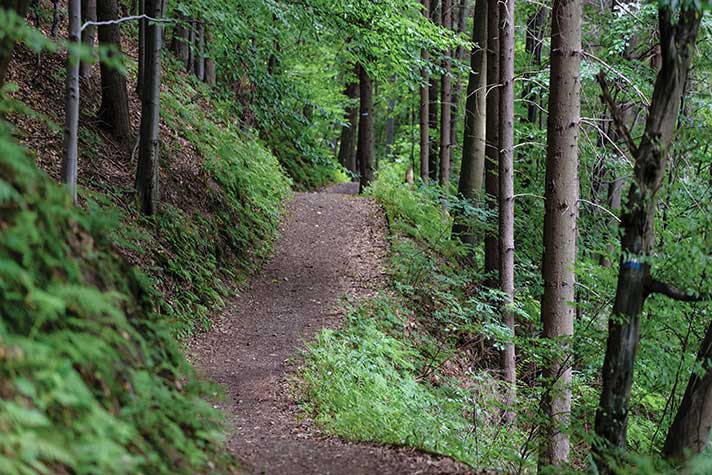Trail Talk – February 2022
A recent article in the Mail Tribune highlighted the efforts of our National Park Service to preserve the natural habitat surrounding the Grove of Titans in Redwoods State and National Park. An elevated walkway is being constructed to protect the shallow root system of this community of spectacularly large and ancient trees. It’s necessary because visitors in recent years have trampled the accompanying vegetation while “cow-pathing” into the grove.
Recent research into forest health has shown the vital role that is carried out by the organisms in the soil surrounding these tree communities. Mycologists (mushroom scientists) stress the chemical communication and interplay of these microscopic mats of interconnectedness. Similar to our own health being tied to an active social network, scientists are finding that individual plants’ health is also dependent on a successful, and similar, interplay.
Other studies explored the resiliency of forest ecosystems following large disturbances such as fire or logging. What was found were areas where soil integrity was less disrupted had remarkably quicker return to a thriving plant community. Side-by-side parcels in the footprint of the Biscuit Fire, one logged and one not, demonstrated the importance of the microscopic soil network in re-establishing the “status quo.”
These studies carry important ramifications regarding our personal comportment while visiting natural areas. Recent research into the importance of cryptobiotic soils has led many agencies to restrict traffic in sensitive areas. Locally, in Forest Park, the old rock pits sport colonies of these sensitive organisms, leading our Public Works Department to post these areas as off-limits. It’s our responsibility as trail users to respect these signs.
When trail design is well thought out, the layout is structured to avoid areas of environmental significance. Consideration is given to a minimal disturbance of the habitat along the route. Nature abhors straight lines—preferring meanders—as if there is no hurry to get from point A to B. In Jacksonville’s trail system, many trails were laid onto old roadbeds or mining ditches. Since these areas had already been impacted, less disturbed places with higher natural integrity could be spared.
It’s time to remind park patrons to respectfully use the trails. Careless hikers and bikers are guilty of destroying trail structure, and are also culpable in the destruction of the environment through which the trail passes. Shortcutting switchbacks, aka “cow-pathing,” creates large dead zones where vegetation is unable to thrive. Often, these shortcuts lead to steep gutters which erode the hillsides and muddy the local streams.
Failure to travel in the center of the trail causes a breakdown of the trail tread. Many local trails are designed at a minimal width, especially on steep hillsides, to protect the environment through which they pass. If your pace on the trail is such that you can’t maintain a reasonable line of travel, then, by all means, slow down. There’s a posted 10mph speed limit for a reason.
Spring is but a short way off, and we look forward to seeing you on the trails.

 Trail Talk is a monthly column by Clayton Gillette about hiking the Jacksonville Woodlands trail system. For more information, please visit the Jacksonville Woodlands Association website at
Trail Talk is a monthly column by Clayton Gillette about hiking the Jacksonville Woodlands trail system. For more information, please visit the Jacksonville Woodlands Association website at